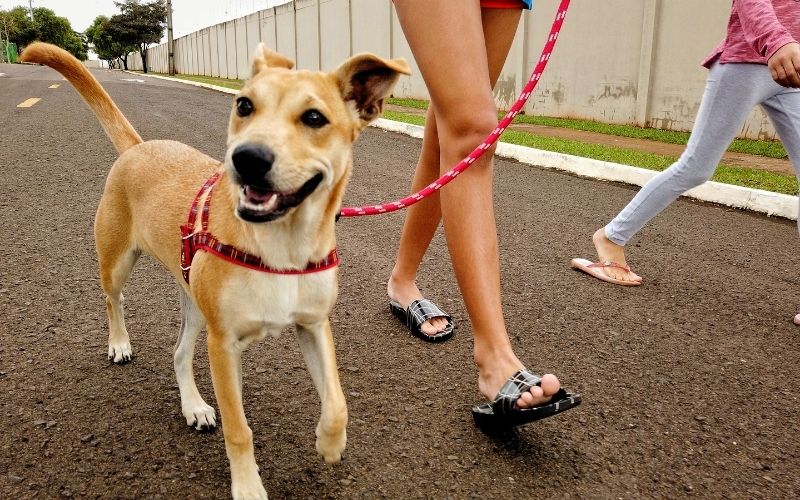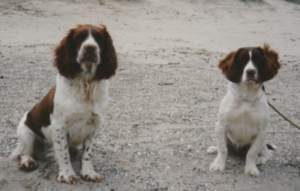Dogs need to be trained to heel for a variety of reasons.
For one, it can keep them safe when walking on busy streets.
It also helps prevent dogs from pulling on the lead and straining their necks.
In this blog post, we’ll explain what heel means and how to train your dog to do it.
We’ll also highlight some tips and tricks that will make the process easier for both you and your dog.
In general, heel means that your dog stays close to you and follows your lead while walking. It’s an important command to learn for both safety and training purposes and helps you to walk your dog in a controlled manner.
What are the benefits of teaching a dog to heel?
There are a number of benefits to teaching your dog to walk to heel and these include:
Being able to have your dog off the lead but under control – this can be useful if you are in an area where putting the lead on could be dangerous or troublesome – such as in thick cover for example.
Walking to heel reduces the chances of your dog pulling on his lead which could injure him or you.
Leads are not natural for dogs and being able to walk freely, under control, is a much more pleasurable experience for your pet.

If you are shooting, hunting or working your dog in another environment then having a dog that will walk to heel is valuable, particularly if you need to carry things as part of the activity.
Walking to heel can help your dog to develop patience and can reduce the risk of your dog breaking free and chasing things.
How do you teach a dog to heel?
The first thing that you need to decide is which side you want him to heel to.
For most people this will be the left hand side, but it really doesn’t matter which side you select.
Put your dog on his lead and sit him down on the side that you have chosen for the heel work.
Use the sit command or hup whichever word you use and keep the lead loose.
Start to walk with your dog next to you and, the instant that he begins to move ahead make a swift turn in the opposite direction, giving the command heel while, at the same time, patting the outside of your leg that is next to the dog.
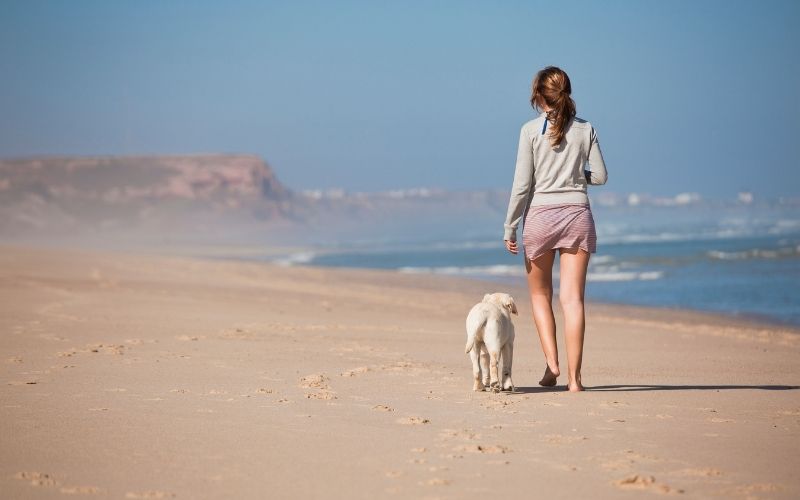
So, if your dog is on your left you would turn to the right when he starts to move ahead, patting your left leg, if he is walking on your right then you would turn to the left while patting your right leg.
The idea is that as your dog starts to pull ahead, the swift turn will turn him making him move closer to your leg and, as you give the heel command at the same time, he’ll begin to associate this with the closeness to you.
Using treats to help to teach heel
Edible treats are often used by dog trainers when teaching the heel command and it’s a good idea to have some in your pocket when doing this.
With a treat in your hand, as you make the turn, as soon as your dog comes in close, repeat the heel command and give him one of the treats.
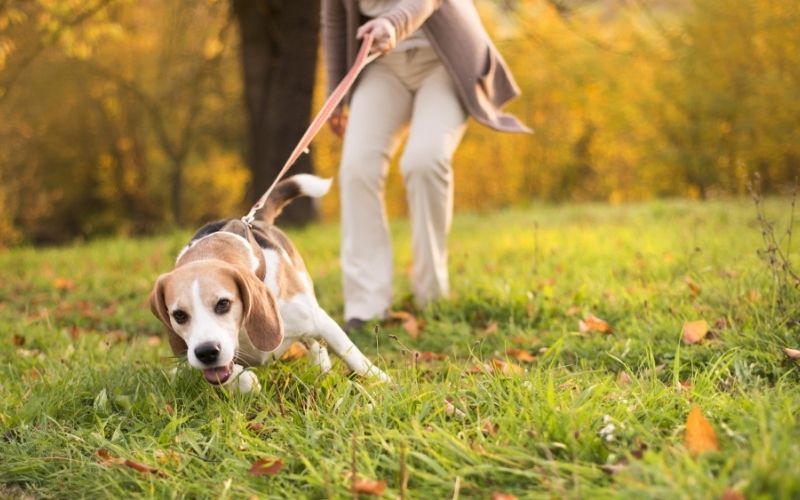
Moving on with heel training
Sit your dog down next to you on the side that he is walking to heel and remove the lead.
As you set off walking, give the command heel and pat your leg, your dog should be reasonably close if you’ve done the previous activity.
Make a turn, pat your leg, reward the dog.
Turn in the opposite direction so that you are turning into the dog, all being well, he’ll understand what you need.
Continuing with heel work
Heel work can be exhausting for a dog because it’s mentally challenging for most, so don’t overdo it.
You will want to get to a stage where your dog will walk to heel next to you whenever you ask him to and the most productive way to develop this is to do short exercises, combined with treats, that are ended with some fun activity, such as playing fetch, hunting or just running freely.
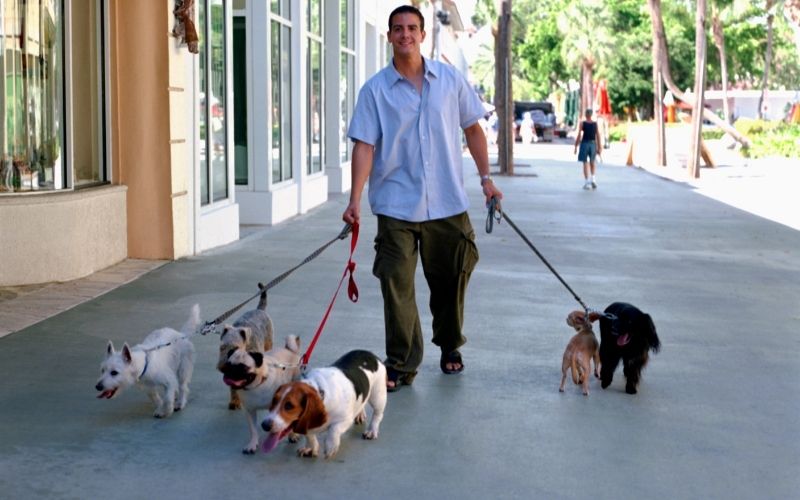
Other tips for successful heel work
If you find that your dog is getting distracted or starting to pull ahead, then stop walking and wait until he settles down.
If he starts to move away from you again, repeat the turn so that he comes in close and then start out again.
Remember that your dog will need a lot of consistency with the command so make sure you are consistent with your praise and the way that you bring him in close to your leg.
Progressing with heel work
If you live in a rural area or your dog will be used in activities such as shooting, then you’ll need him to be ready and able to walk to heel around a variety of distractions.
Things such as sheep, pheasants and rabbits offer masses of temptation to a dog ( particularly rabbits) and you’ll need him to stay in control when faced with these distractions.
You will need to introduce your dog to these carefully and in short periods.
It is always a good idea, in the early stages, to keep him on his lead ( even if he heels well ), particularly if he has had minimal exposure to the temptation.
If he does try to make a break and chase, then you already have him under control, you can repeat and reinforce the heel command rather than running the risk of disobeying and having to run after him.
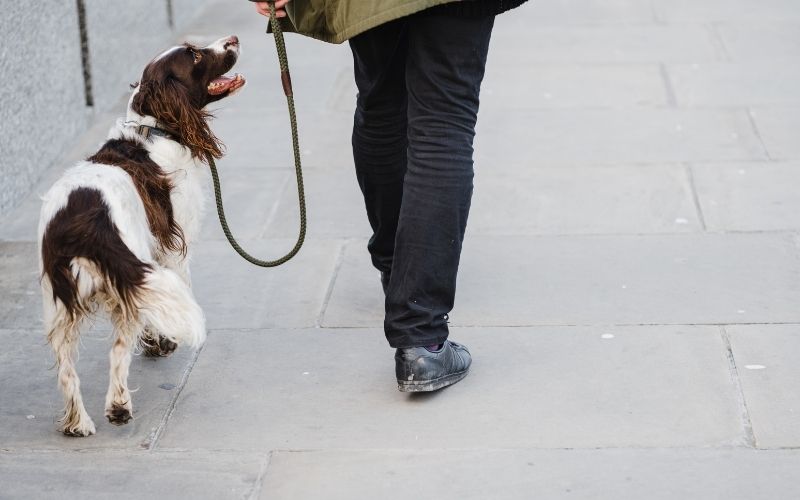
Looking to the future
As your dog continues to progress with the heel command, you’ll need to start increasing the length of time that he has to stay in control before giving him a reward.
This transition from treat based training will be tough for some dogs but it is an important part of progressing his training and ensuring that he obeys your command without fail.
Try to make the transition slowly, by increasing the time ever so slightly each day until you are able to move on for longer periods without treating him.
If he does start to try and pull ahead or disobey, go back a step and repeat that activity for a little while before progressing again.
As your dog gets better at heel work, you may also want to start introducing distractions.
Walk him across a field, close to a sheep or through a wooded area and see how he does.
If he does well, then start increasing the length of time until you can take him for nice long walks without any issues.
Your dog should be able to walk to heel easily, even around the most tempting of distractions.
Whenever you see him start to get distracted or pull ahead, give your command and bring him close again, reinforcing with a treat if necessary.
Learning how to achieve this will be tough work but it is also incredibly rewarding for both you and your dog.
A note on spaniels and heel work
If you are a spaniel owner then heel work is one of the very last activities that you should teach.
It can be tricky to get a spaniel to walk to heel as all he wants to do is hunt, and, if you are training your spaniel for work or competition, then too much heel work can dent his confidence.
As a rule I am happy if my spaniels are within a couple of yards of me when I tell them to heel, I’m not interested, nor would I expect them to heel in the same way that a Labrador or no slip retriever does.
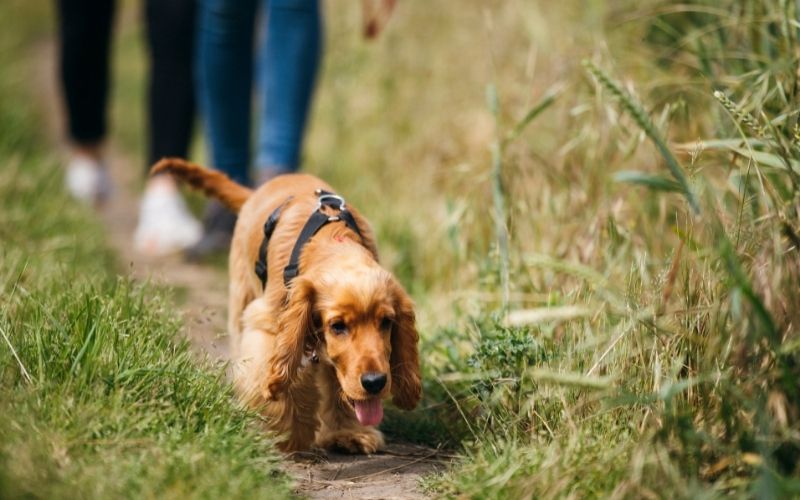
Don’t overdo heel work with spaniels, if you do then, I assure you, you will face problems with his hunting in the future.
Final Words
Heel work may look easy but for your dog, it’s a boring activity and one that he will find difficult to understand.
Remember that your dog wants to run and use his nose and walking to heel is completely counterintuitive to those aims, so be prepared.
You will need to take things slowly and carefully and be consistent.

